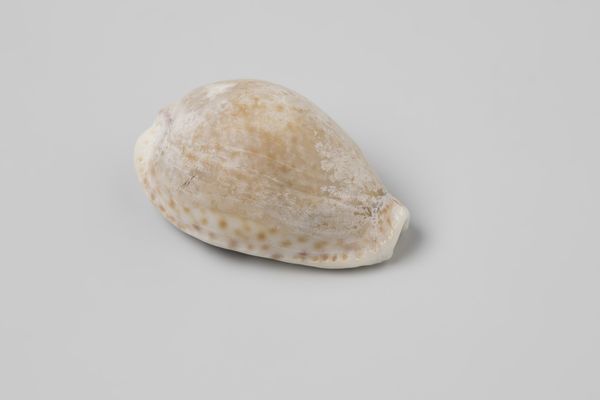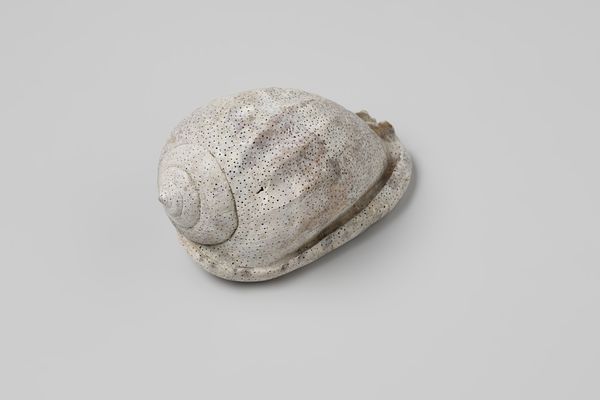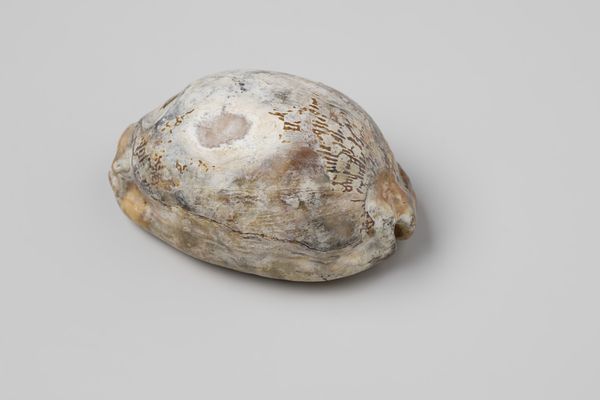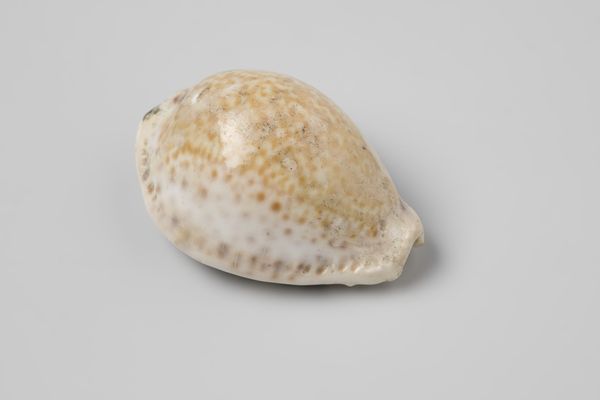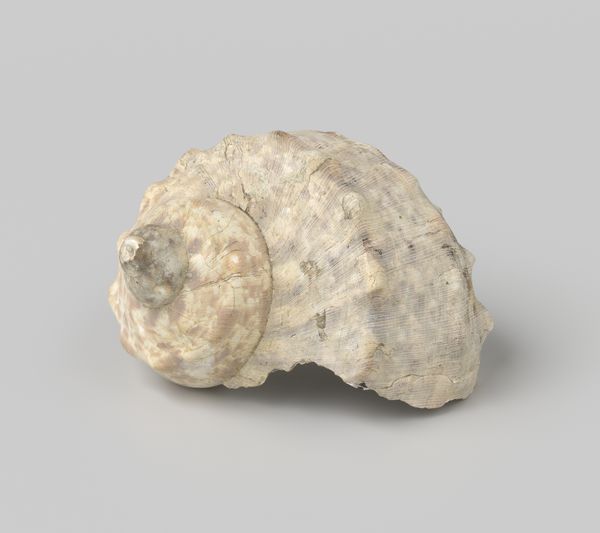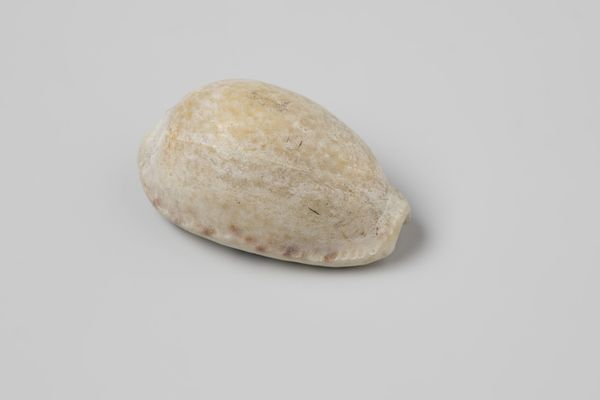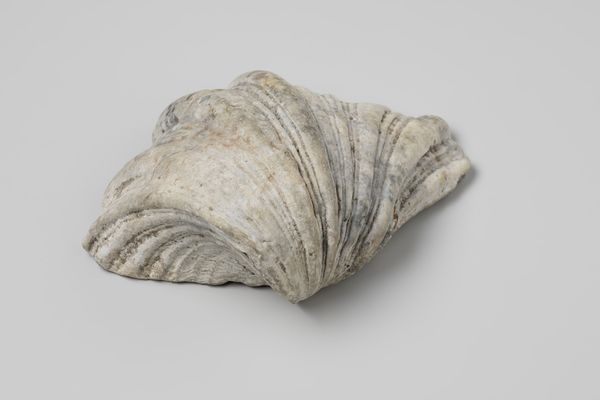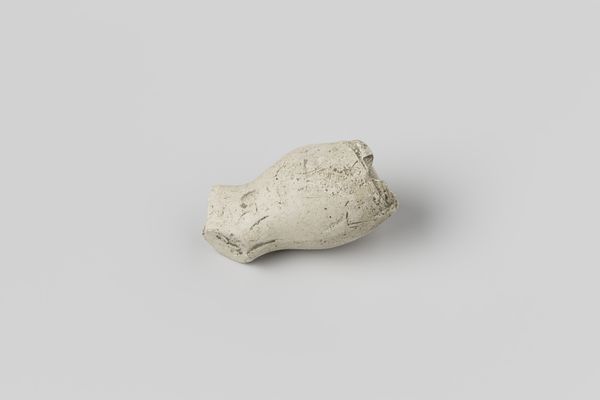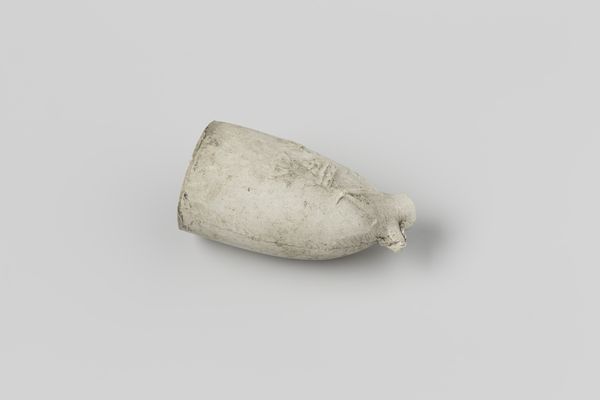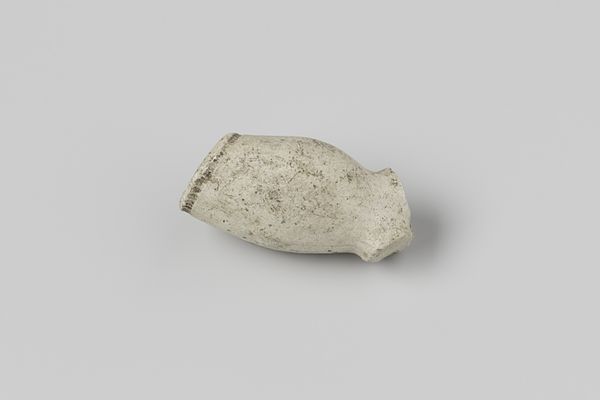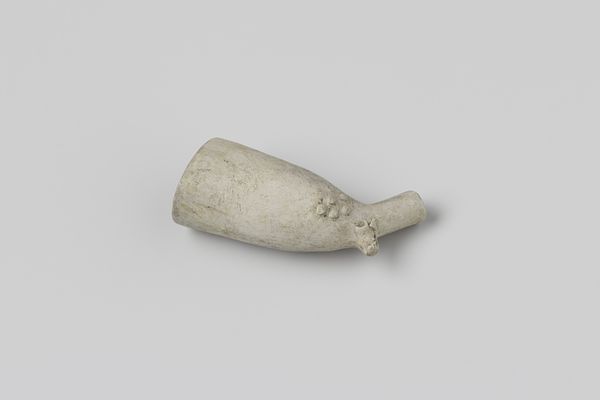
Cypraecassis testiculus shell from the wreck of the Dutch East India ship Witte Leeuw before 1613
0:00
0:00
nietvantoepassing
Rijksmuseum
ceramic, sculpture
#
dutch-golden-age
#
ceramic
#
vanitas
#
stoneware
#
sculpture
#
ceramic
Dimensions: length 9.5 cm, width 6.5 cm, height 6 cm
Copyright: Rijks Museum: Open Domain
Curator: This is a Cypraecassis testiculus shell, dating from before 1613. It was recovered from the wreck of the Dutch East India ship Witte Leeuw. Editor: My initial reaction is that this object is profoundly sad. Its aged, pockmarked surface gives an impression of decay, despite its natural form. Curator: Note how the texture, the stark contrast between the smooth underbelly and the porous upper shell, gives the object a dynamic tension. The uniform dot pattern, too, is quite compelling. Editor: Indeed, but it speaks to me of the brutal history of trade. This shell wasn't merely a found object; it represents the exploitation of resources and the disruption of ecosystems by colonial powers. We have to consider the human cost of these ventures. Curator: Of course, the shell itself possesses inherent formal qualities. Its spiral form adheres to principles of natural design, creating an almost perfect balance and sense of containment. It is quite pleasing aesthetically. Editor: But isn’t that "perfection" built on a foundation of inequality? This shell comes from the ocean floor, via a sunken vessel that played a part in establishing trade routes fueled by slavery and oppression. Can we ignore that context? Curator: By appreciating the shell’s structure and visual elements, we begin to understand its place within the natural world – separate from us. The pattern of the holes introduces subtle contrast, a pleasing visual variation on an organic object. Editor: True, the artistry of nature is undeniable, but consider the sailors aboard the Witte Leeuw. Their lives were expendable; consider those whose land was stolen to fuel that trading mission. Those stories are etched, invisibly, onto this very shell. It is imperative that we unpack these colonial narratives. Curator: I still appreciate the inherent qualities – the interplay of form and texture – within this natural object. It encourages careful looking. Editor: I agree, but for me, the shell invites more critical reflection on the history it represents.
Comments
No comments
Be the first to comment and join the conversation on the ultimate creative platform.

